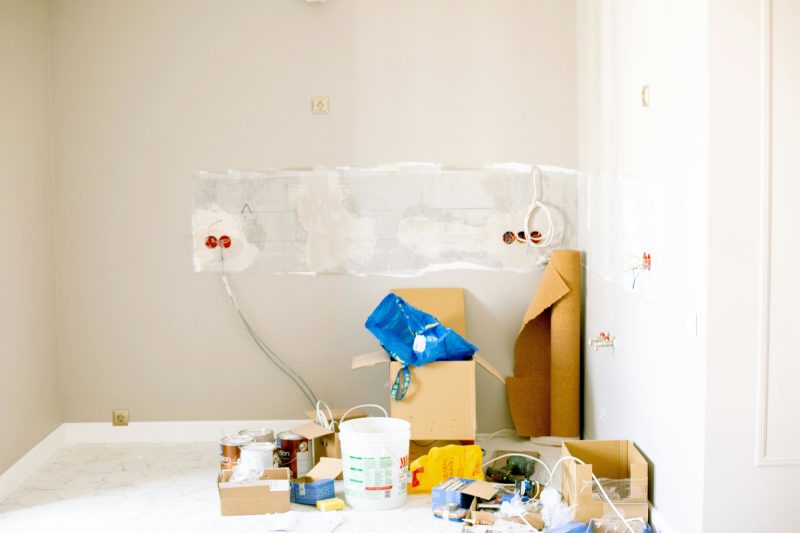Renovations can breathe new life into our homes, but they also generate a significant amount of waste. From old fixtures and fittings to construction debris, the aftermath of a home makeover can be less than pretty for the environment.
As homeowners become increasingly conscious of their ecological footprint, finding sustainable ways to manage renovation waste has never been more critical. In this context, choosing the proper disposal method ensures a cleaner environment and aligns with our broader sustainability goals. If you’re planning a home project, taking a moment to choose your dumpster size can be a pivotal step in managing your renovation waste responsibly.

The Vitality of Environmentally Conscious Disposal
Waste from construction and renovation efforts exerts an immense toll on our environment. Mountains of debris overflow landfills. Incredible resources fuel processing this refuse. Thankfully, many discards may be recycled or disposed of through eco-friendly channels. Homeowners embracing sustainable disposal practices contribute to cutting waste, promoting recycling, and supporting greener alternatives.
Disposal that respects sustainability reduces landfill volume while conserving natural resources through recycling. Items like metals, woods, glass, and plastic may find renewed purpose, slashing demand for extracting and processing virgin materials – lessening environmental harm.
Navigating Your Greener Renovation Path
Embarking on eco-friendly renovation depends on planning. Thoughtful blueprints identify materials recyclable, reusable, donatable, or requiring disposal. Navigate your renovation with environmental stewardship:
Discerning Material Selections
Choosing sustainable materials launches an eco-friendly renovation. Seek recycled, locally harvested, or sustainably sourced options. Not only do they reduce environmental impacts, but they also imbue your home with unique histories and stories. Incorporating eco-friendly materials is not just about the immediate aesthetic or functional benefits; it’s about making a long-term investment in the health of our planet.
Materials like bamboo, cork, and reclaimed wood are sustainable but also durable and versatile, offering many design possibilities. By prioritizing these materials, you contribute to reducing deforestation, lowering carbon emissions, and supporting local economies. Moreover, eco-friendly materials often come with the added benefit of being toxin-free, improving indoor air quality and overall wellness in your home.
Reusing and Repurposing
Take the time to assess what materials can get a new life before demolishing walls or dismantling cabinets. Vintage fixtures add character, and old wood can become shelving. Another great option is donating items that are still in good shape, preventing them from ending up in landfills and giving them a second chance. This approach not only preserves historical and aesthetic value but also minimizes the environmental footprint of your renovation.
Reusing and repurposing can extend to nearly every aspect of your project, from structural elements to decorative details. Old doors can be transformed into headboards or tables, while unique bottles can become light fixtures or vases. This creative process contributes to a more sustainable renovation and adds a layer of personalization and story to your space, making it truly one-of-a-kind.
Responsible Disposal
Proper disposal is critical for waste that can’t be repurposed. Selecting the right dumpster size is crucial here. The ideal dumpster for your project ensures efficient waste management. This helps you responsibly dispose of materials without overloading local landfills with waste. Understanding the importance of responsible disposal involves recognizing construction waste’s impact on the environment. It’s not just about getting rid of unwanted materials; it’s about doing so in a way that respects our ecosystem.
Selecting the correct dumpster size, as facilitated by resources that help you choose your dumpster size, not only optimizes the disposal process but also significantly reduces the risk of pollution and habitat destruction. It’s a vital step in ensuring that materials that cannot be reused or recycled are handled in the least harmful way possible. Moreover, responsible disposal often includes hazardous waste management, ensuring that materials like old paint, chemicals, or asbestos are disposed of according to safety regulations, and protecting human health and the environment.
Conclusion
Eco-friendly renovations aren’t just about sustainable materials or energy-efficient appliances. It’s also how you handle waste created during these projects. Planning and making informed disposal choices significantly reduces renovations’ environmental impact. Remember, each eco-friendly renovation step contributes to protecting our planet so when planning your next home project, consider how you’ll sustainably dispose of waste. Managing renovation waste responsibly reflects your commitment to not only beautifying your home but also preserving the environment for future generations.
Latest posts by Canadian Home Trends (see all)
- Layer Up – Wrap Your Bathroom In Light - December 13, 2025
- The Power of Rest: Elevate Your Wellness with Better Sleep - December 13, 2025
- VERSATILE KITCHEN DESIGN - December 13, 2025






